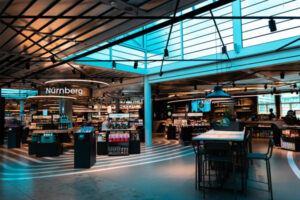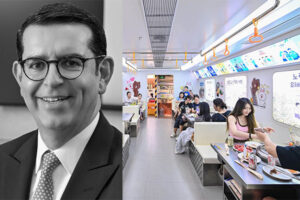By Maximilian Ludwig
Brick-and-mortar retailers are facing extremely challenging and uncertain times. Online retailers, such as Amazon and eBay, are enticing customers away from offline retail. As a result, fewer and fewer people are choosing to spend their leisure time strolling around and shopping in malls. The irony: At the same time, the number of shopping centers is growing – albeit very moderately – and with it the number of shops nationwide, thereby creating additional competition.
Aging shopping centers, in particular, find it hard to attract visitors. If operators want to attract more people to their centers, they need to increase the quality of stay and add experiential value. To achieve this, it is essential that malls are kept up to date and are constantly rejuvenated. Refurbishments – and thus the active asset management of a property – are fully in vogue. In its most recent study of the German shopping center landscape, the Cologne-based EHI Handelsforschungsinstitut reports that 46 malls nationwide are set to be refurbished, renovated, or modernized. The majority of these centers were opened in the 1990s or at the turn of the millennium and, therefore, no longer cater to modern consumers wants and needs.
An example of a successful refurbishment is Kröpeliner Tor Center (KTC) in the old town of Rostock, in the north of Germany. Located only a few hundred meters from the popular Unterwarnow Harbor, it is ideally situated to attract visitors. The 20,000 sq m of rental space in the shopping center are spread over four underground floors and three aboveground floors. In addition to retail space, KTC also accommodates a large fitness studio and around 1,000 sq m of office space.
In 2017, KTC’s management developed a new leasing concept in response to 22 expiring leases. Although KTC opened in 2007 and was still relatively new, it needed an upgrade. An important component of the new leasing concept was to negotiate follow-up contracts with a number of well-known existing tenants. In addition, 840 sq m was allocated to new stores and eateries. The aim of this restructuring: To optimize footfall from daily casual customers.
There are a few things to consider in any refurbishment. When selecting tenants, asset managers should pay attention to maintaining a balanced mix of well-known brands and more individual shop concepts. In addition to improving the appearance of the center, it is essential to select tenants carefully. Ideally, every store is thoughtfully selected so that visitors can find everything they need in the mall. Visitors should also be able to find their way around quickly. For this reason, special care is taken when agreeing on leases with new tenants to ensure that each tenant fits into the immediate environment and that clusters are created. At KTC, for example, a sporting goods retailer was replaced by a drugstore in order to concentrate and strengthen the cluster of stores selling everyday items in the basement.
In addition, around 7,500 sq m of KTC were visually upgraded in the course of the refurbishment – including the important food court area on the ground floor, which was redesigned and modernized to make it more attractive and inviting. The food court has been significantly upgraded with a maritime lounge area and a new, more welcoming lighting concept. Eateries and green plants were added to enhance the atmosphere.
The money has been well invested: Inviting dining areas make a valuable contribution to the successful operation of any mall. Food courts allow visitors to rest and recharge their batteries before they continue their shopping sprees. For some visitors, the range of dining options is actually the main reason for going to a particular shopping center. Many malls, therefore, have a lot to offer in terms of food. As the real estate experts at JLL found out in a recent survey, consumers are generally satisfied with the food service options at their local centers.
Nevertheless, there is still potential at many centers: 65 percent of JLL’s respondents stated that they would take advantage of “social drinking” with smaller meals or a snack if they were available in their mall. “Casual dining” (56 percent) in restaurants with proper food served in a casual atmosphere would also be welcomed by more than half. Fifty percent wanted either fast food restaurants or shops with take-away sweets. At KTC in Rostock, a frozen yoghurt shop and a chocolatier have recently been added to meet these customer wishes. Another factor not to be underestimated in terms of quality of stay are the restrooms, whose cleanliness many visitors regard as a litmus test for the general condition of a shopping center – just like they would in a hotel room. In the course of the refurbishment of KTC, the restroom areas were also renovated and decorated in a maritime style similar to that found in the food court.
The example of Rostock’s KTC confirms the importance of active asset management. It is not enough to buy a shopping center and then just maintain the status quo. If you want to increase customer through traffic, you have to be prepared to experiment and invest money. KTC’s new dining and retail concept invites Rostock inhabitants and tourists alike to spend more time and money at the mall.






